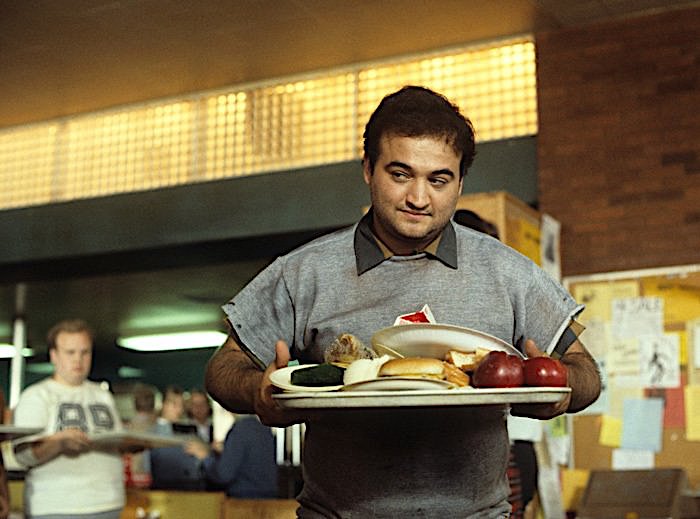MARIANI’S
Virtual Gourmet
October
18, 2020
NEWSLETTER
❖❖❖
IN THIS ISSUE
LOCAVORE, SCHMOCAVORE
By John Mariani
NEW YORK CORNER
LOVE AND PIZZA
Chapter Thirty
By John Mariani
NOTES FROM THE WINE CELLAR
WINE AND FOOD MATCHES REVISITED
By Geoff and Susan Kalish
❖❖❖
LOCAVORE, SCHMOCAVORE
By John Mariani
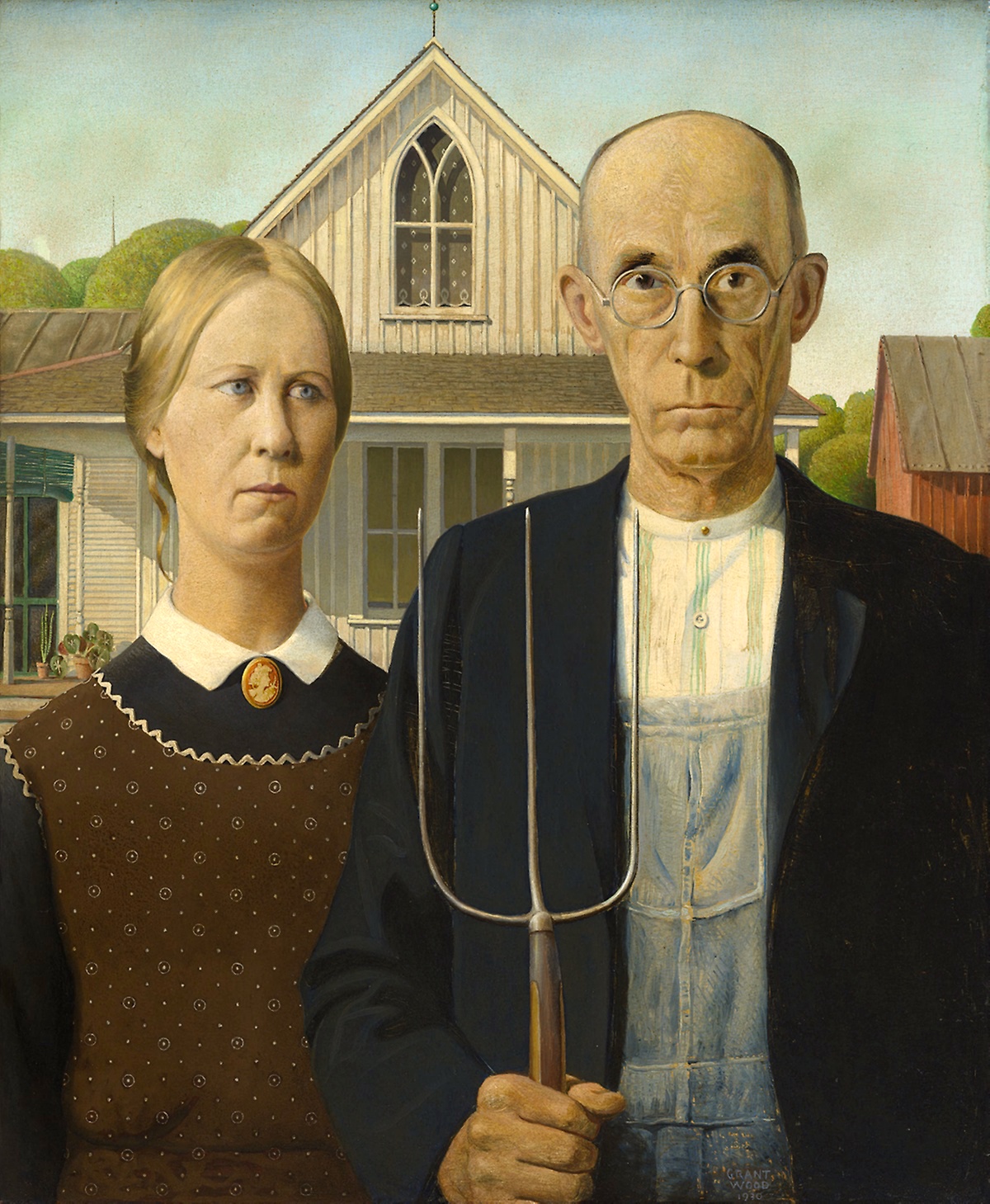
"American Gothic" by Grant Wood
I love locavores. I
loved them when they were Neanderthals and
nomads and gatherers eating off the land. I
loved them when everybody for the past twenty
thousand years ate food grown within a mile of
their hut. I loved them when the Israelites ate
manna while wandering in the desert for 40
years. I loved them when they grew Victory
Gardens during World War II. I
loved them when Alice Waters four decades ago
insisted food grown locally is usually better
than shipped in from China. And I loved Michelle
Obama for puttering around in the White House
vegetable garden.
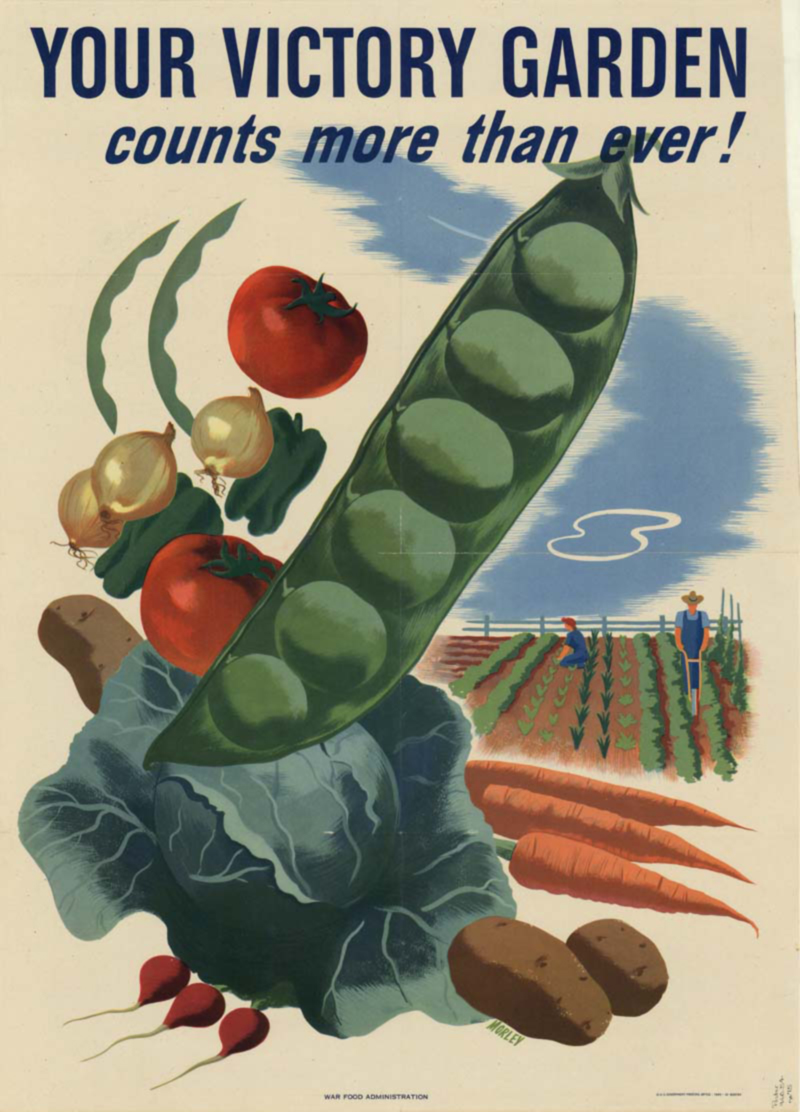 What I don’t love is how self-described
locavores believe they are a new breed of
cult-like idealists who have adapted the word
coined by Jessica Prentice at the 2005 World
Environment Day in—where else?—San Francisco and
now make themselves out to be missionaries for a
concept with a large “Duh?” factor.
What I don’t love is how self-described
locavores believe they are a new breed of
cult-like idealists who have adapted the word
coined by Jessica Prentice at the 2005 World
Environment Day in—where else?—San Francisco and
now make themselves out to be missionaries for a
concept with a large “Duh?” factor.
According to Jennifer Maiser, editor of the
Eat Local Challenge website, ways to become a
locavore include: Visit a farmers' market;
Lobby your supermarket; Choose five foods in your
house that you can buy locally; Preserve a local
food for the winter; Find out what restaurants in
your area support local farmers; Buy from local
vendors; Visit a farm and “Be sure to take the
kids along on this journey! Children need to know
where their food is coming from in order to feel a
sense of connection to their dinner.” (And you know how
kids love meeting a lamb that will be their dinner
later in the week.)
These are all fine enough ideas, but we’ve
been hearing them for centuries. My shelves are
crammed with books on the subject that date back
to the days of the counterculture movement,
including classics like Stewart Brand’s Whole Earth
Catalog (begun in 1968), Frances Moore
Lappé’s Diet
for a Small Planet (1971), 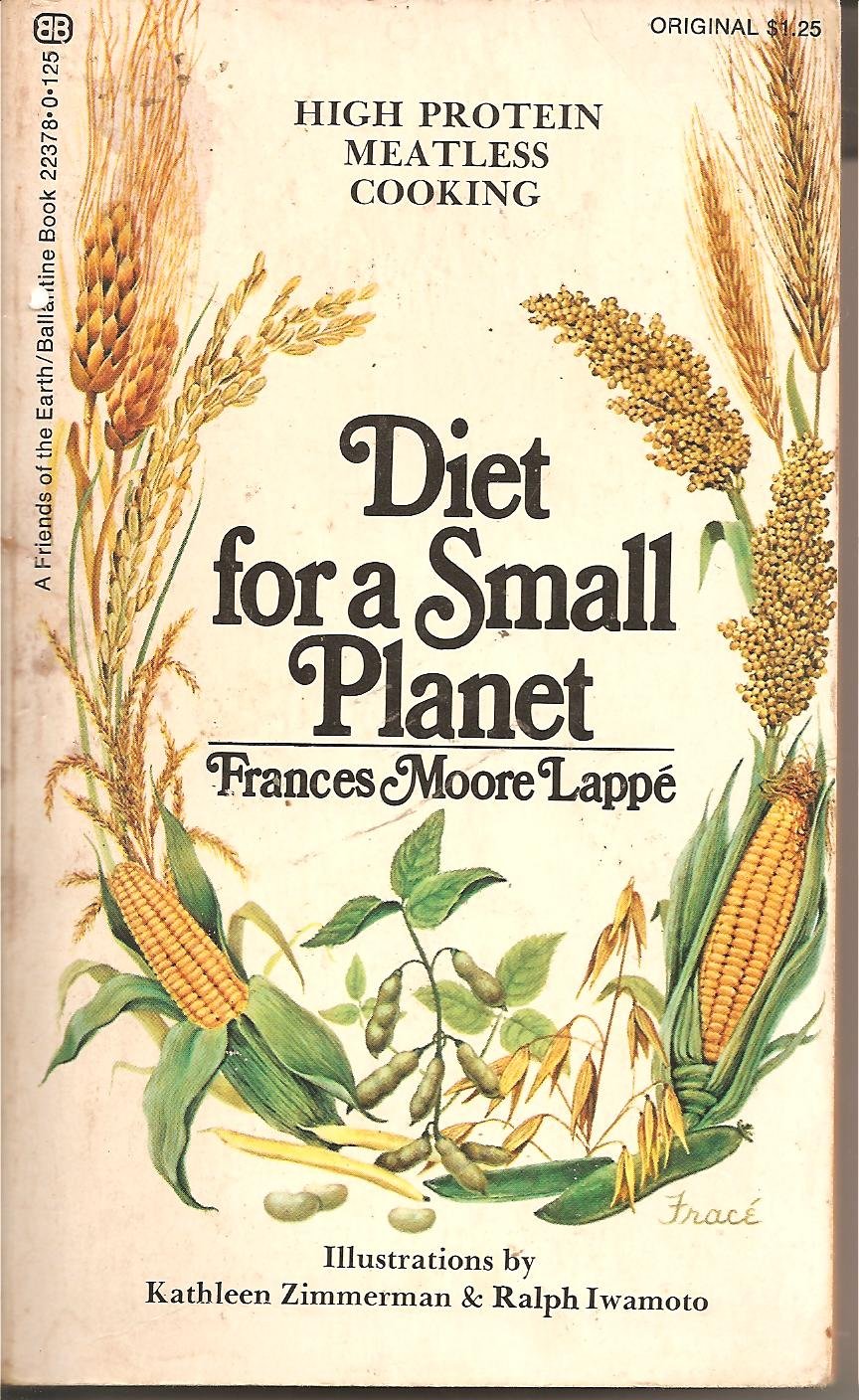 David Stienman’s Diet for a
Poisoned Planet (1990), and Nancy Harmon
Jenkins’s The
Mediterranean Diet Cookbook (1994).
David Stienman’s Diet for a
Poisoned Planet (1990), and Nancy Harmon
Jenkins’s The
Mediterranean Diet Cookbook (1994).
Re-iteration, even hitting people over the
head with the same common sensical advice, is
worthwhile in teaching a religion but hardly
revolutionary.
Locavorism has, however, gone beyond its
Kumbaya moment and become a media tool, a way to
hype a young chef or new restaurant, just as were
labels like “la nouvelle cuisine,” “New American
cuisine,” “molecular cuisine,” and the less
Latinate “farm-to-table cuisine.” Not a
press release about a new chef or restaurant comes
across my desk that does not use the locavore or
farm-to-table boast, even when largely specious.
Take just about any menu from any restaurant in
the U.S. and within five seconds you’ll find
ingredients that, by necessity, had to be flown in
from somewhere else, especially seasonal ones like
softshell crabs, crayfish, and white asparagus.
I don’t think any tomato from anywhere is
worth eating before late August, yet every
restaurant has them year-round. The same with
crappy out-of-season vegetables. And if a
chef doesn’t have a chicken farm or a hog farm
within 50 miles of his kitchen, does he not serve
those items?
 One who tried very hard to
be very strict about locavorism was Sean Brock,
formerly chef-owner of Husk restaurant in
Charleston, S.C., whose mission was to interpret “the bounty
of the surrounding area, exploring an
ingredient-driven cuisine that begins in the
rediscovery of heirloom products and redefines
what it means to cook and eat in Charleston.” Brock
crafted menus throughout the day, responding to
what local purveyors were supplying the kitchen at
any given moment, insisting, “If it doesn’t come
from the South, it’s not coming through the door.”
He disdained using olive oil and he even made his
own salt on the roof of the restaurant.
One who tried very hard to
be very strict about locavorism was Sean Brock,
formerly chef-owner of Husk restaurant in
Charleston, S.C., whose mission was to interpret “the bounty
of the surrounding area, exploring an
ingredient-driven cuisine that begins in the
rediscovery of heirloom products and redefines
what it means to cook and eat in Charleston.” Brock
crafted menus throughout the day, responding to
what local purveyors were supplying the kitchen at
any given moment, insisting, “If it doesn’t come
from the South, it’s not coming through the door.”
He disdained using olive oil and he even made his
own salt on the roof of the restaurant.
Locavorism also begs the question, well,
what if the locally grown food isn’t nearly as
good as the stuff brought in from California or
Wisconsin or the Mediterranean? Is there
a real rationale for a wildly popular place like
Torrisi Italian Specialties in New York City
selling American prosciutto and parmesan cheese
rather than the best imported Prosciutto di Parma
and Parmigiano-Reggiano? And if
you don’t happen to live in a state that makes
wine, are you going to eschew bottlings from the
Napa Valley or Washington state?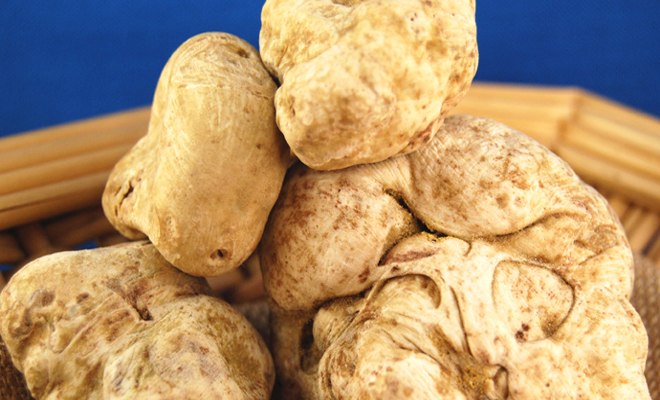
Of course, the rest of the world finds
locavorism nothing more than the first precept of
good cooking: Buy the best ingredients you can
from the region you are in. But, if other, better
ingredients have to be brought in by modern
transport, including FedEx and DHL, then you do
so. The great master chefs of France do not grow
their own foie gras, and the great master chefs of
Italy do not grow their own white truffles.
Chinese chefs pay top dollar for luxuries like
bird’s nest and shark’s fin, while the finest tuna
in the best sushi bars in Tokyo might have been
shipped in from American waters and Kobe beef
comes only from Kobe.
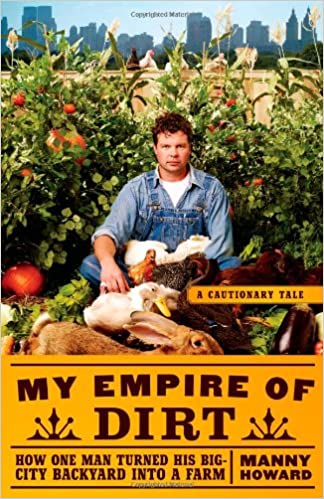 And for anyone crazy
enough to try to live exclusively off food
produced on one’s own land, I highly recommend the
hilarious but heartbreaking book My Empire of Dirt:
How One Man Turned His Big-City Backyard into a
Farm, A Cautionary Tale by Manny Howard, who spent a year
learning very hard, expensive lessons in order to
raise a few shriveled potatoes and some ornery
rabbits, almost destroying his marriage and losing
his sanity along the way. “I still
don’t know if I believe urban agricultural
sustainability is the right course,” he wrote
after a backbreaking year in his Brooklyn
backyard, “not in any productive way, and not at
half the price I paid both in life and treasure.
My interest in
And for anyone crazy
enough to try to live exclusively off food
produced on one’s own land, I highly recommend the
hilarious but heartbreaking book My Empire of Dirt:
How One Man Turned His Big-City Backyard into a
Farm, A Cautionary Tale by Manny Howard, who spent a year
learning very hard, expensive lessons in order to
raise a few shriveled potatoes and some ornery
rabbits, almost destroying his marriage and losing
his sanity along the way. “I still
don’t know if I believe urban agricultural
sustainability is the right course,” he wrote
after a backbreaking year in his Brooklyn
backyard, “not in any productive way, and not at
half the price I paid both in life and treasure.
My interest in 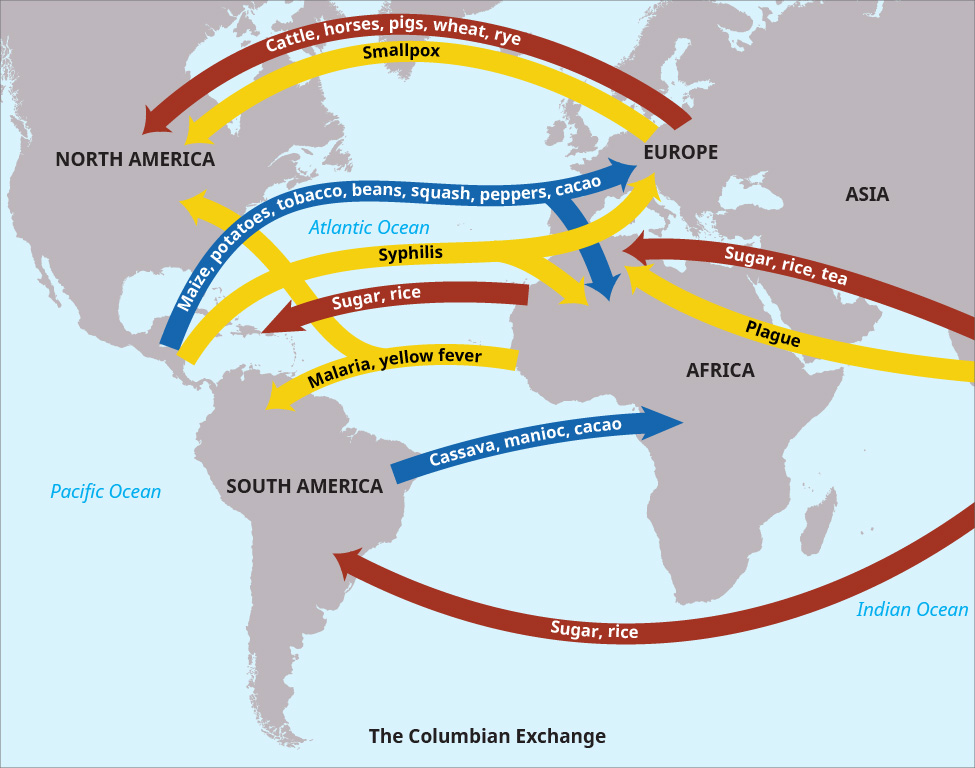 ‘greening’
the urban landscape was still minimal. Community
gardens still smacked of the grimmest joinerism.”
‘greening’
the urban landscape was still minimal. Community
gardens still smacked of the grimmest joinerism.”
So, when I hear an individual is a
locavore, I have nothing to say in either assent
or dissent. Locavores
have good ideas, relevant ideas, but they are no
more new
ideas than exhortations to get a good night’s
sleep and try to exercise. But from
the mouths of most chefs, those ideas are either
mere hype or a weird notion that they were the
first to cook food from the nearby garden, which
will come as a big surprise to cooks in Provence,
Sicily, and Shanghai.
Let’s remember that Christopher
Columbus didn’t sail west to a New World to
discover gold; he did so to bring back spices from
the Orient, but instead launched the so-called
Columbian Exchange, by which the entire world was
changed utterly by the transport of foods that for
hundreds of thousands of years had stayed put in
the Americas and Europe. Before
Columbus, no Thai cook ever used a chile pepper,
no Italian a tomato, and no Irishman ever roasted
a potato. I’m
glad Columbus sailed west. The world is a lot
better fed for it and a much more savory place to
live.
❖❖❖
By John Mariani
LOVE AND PIZZA
Since, for the time being, I am unable to write about or review New York City restaurants, I have decided instead to print a serialized version of my (unpublished) novel Love and Pizza, which takes place in New York and Italy and involves a young, beautiful Bronx woman named Nicola Santini from an Italian family impassioned about food. As the story goes on, Nicola, who is a student at Columbia University, struggles to maintain her roots while seeing a future that could lead her far from them—a future that involves a career and a love affair that would change her life forever. So, while New York’s restaurants remain closed, I will run a chapter of the Love and Pizza each week until the crisis is over. Afterwards I shall be offering the entire book digitally. I hope you like the idea and even more that you will love Nicola, her family and her friends. I’d love to know what you think. Contact me at loveandpizza123@gmail.com
—John Mariani
To read previous chapters go to archive (beginning with March 29, 2020, issue.
LOVE AND PIZZA
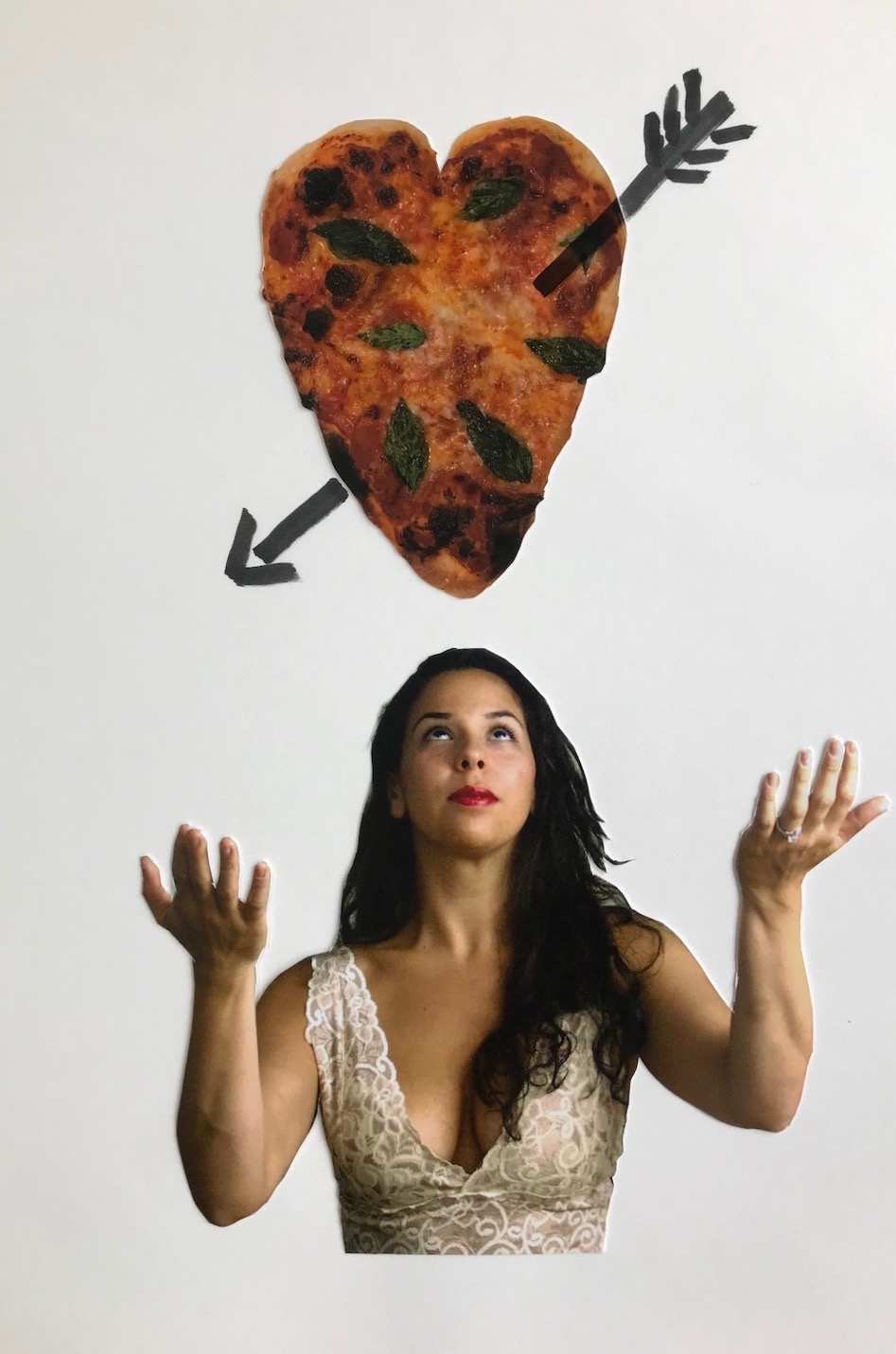
Cover Art By Galina Dargery
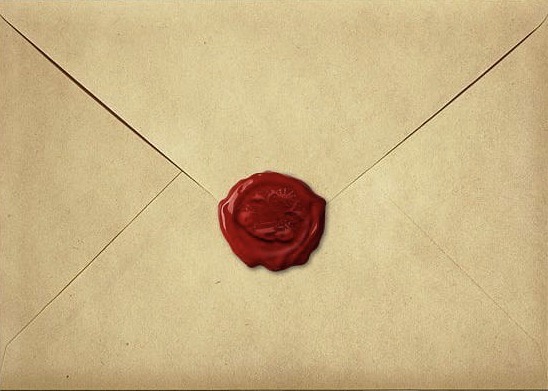
Two days after she’d returned from New
York, an envelope arrived at Nicola’s dorm. It was
of very fine paper, obviously handmade, cream
colored and closed with a red wax stamp with the
crossed letters LFC. The
writing on the front was a baroque flourish of
script.
She opened the envelope, in which she found
another. She
opened that, and read the folded note inside,
which said, in Italian, “You are cordially invited
to a reception in honor of the birthday of Il
Marchese Dorando Cavallacci on Saturday April 25.”
Then, almost as if planned down to the
second, the phone rang.
“Nicolina! Ciao, it’s Giancarlo.”
“Giancarlo! Come stai?”
“Benissimo,”
then,
“Nicolina, I have missed you very much.”
“I’ve missed you too. Very,
very much.”
“I’m so sorry I have not called you, but it
has been crazy here.
I think I told you that my father has not
been well, so I’ve had to attend to the business
here in Turin, then had to fly to Palermo, and now
I’m back.”
Giancarlo proceeded to ask how everything
in New York had gone and Nicola said it was more
fun than she had
imagined it would be, then softened the
excitement with a few sober words about her family
and the recent passing away of her grandmother.
“So, Nicolina, did you get my invitation?”
“I just opened it this minute.”
“So, you will come? I would
really love to have you here and to meet my
parents. Plus, if you don’t, I won't be able to
see you again until the middle of May.”
Nicolina’s momentary glee suddenly slipped
into glumness.
“Well, of course, I want to come,
Giancarlo. But
why won’t I see you again till May?”
“Ah, the same old bullshit. The
business is in flux right now, lots of big
decisions have to be made, and it’s all on my
shoulders for the time being. I’ll be
traveling a lot in the next three weeks.”
Nicola thought that by the time Giancarlo
finished his traveling, she would be finished her
semester and flying back to the U.S. and then
who knew how long it would be before Giancarlo
could visit her?
“Oh, Giancarlo, that is so upsetting, but
of course I’ll come to the party.”
“Bravissima,
Nicolina! And listen, cara,
after I get through this tough period, I’m sure I
will be more free in the summer when industries in
Europe slow down or shut down. I’ll be
able to visit you in New York or maybe you can
come back to Italy and we go on a little
vacation.”
Nicola knew she had six weeks of summer
school ahead of her, starting in June, but
promised herself she would work it out to be with
Giancarlo as soon as possible after that.
“Well,” she told him, “we’ll have the
weekend in ... where is the
party? Torino?”
“No, it’s at our villa. That’s really why I
want you to come. I want you to see how beautiful
it is in springtime.”
“And what kind of clothes should I bring?”
“For the reception, bring something dressy
for the daytime.
Otherwise, I want you be very comfortable. Maybe we
will go into Torino for a night. You’ve
never been, correct?”
“No, never,” she replied. “That would be
wonderful,” thinking they would have a night
wholly to themselves.
“Va
bene. I will send a car to pick you up the
day before the reception, okay? I would
come myself but I will be flying back from Palermo
that day. We’ll have a nice dinner with my
family.”
The two of them talked for a while longer,
then Giancarlo said he had to go. “I can’t
wait to see you, Nicolina,” then the phone clicked
off and to Nicola he seemed very, very far
away.
*
*
*
By the time
April 24 arrived, Nicola had gone over her weekend
wardrobe with Catherine half dozen times, and, of
course, Catherine suggested her friend treat
herself to a new dress for the event. The idea of
a double date with Catherine and her new boyfriend
was now moot.
“Do they wear white in springtime over
here?” asked Nicola?
“I don’t know,” answered Catherine, stumped
by a rare question of style she could not answer. “Why
don’t you ask Signora Palma?”
“Great idea!
Maybe she even has some fabulous dress I
can buy or borrow.”
And, of course, Signora
Palma did. She
told Nicola that white might be too obvious: “Some
people will wear white, but not the younger
girls,” she advised. “You come over to the studio,
I give you something perfetto for
you, bella.”
The perfect outfit turned out to be a
gorgeous spring dress in a very light peach color
with small white polka dots, with a wide dark blue
leather belt and matching shoes.
Nicola looked at the garment’s superb
tailoring, the careful hand sewing of the sleeves
and cuffs, the graceful, soft way two pleats
centered the back.
“How much is it?” asked Nicola, thinking Signora
Palma might give her a discount.
“Niente!
I show this dress last fall for this spring. So, I
have no more use for it. It’s a
gift, bella. You my
best advertising!”
“Oh, Signora Palma, that is so sweet
of you. How
can I ever thank you?”
“You come back in Settembre
for the shows again.
You be my girl, capisce?”
Then the two women hugged and Signora
Palma wrapped up the dress in tissue paper and
placed it in a box with her logo on it.
The girls back at the dorm adored the
dress, and told Nicola the marchese’s family would
be impressed by this Italian-American girl with
such good taste and expensive clothes.
“It’s not his family I want to impress,”
she said.
Catherine took her by the shoulders and
said, as if Nicola understood nothing, “Oh, yes you
do, Nicky. I
know this kind of family and they can be very critical. Giancarlo’s
already nuts about you. It’s the
family, especially his mother, you’re going to
have to impress.
Trust me on this, Nick.”
Catherine let go of her friend and said,
“Okay, let’s go for pizza. My treat.”
The other girls in the room quickly
assented but Nicola was oddly silent.
“You coming, Nick?” asked Mercédes?
“Huh?”
said Nicola, breaking free from thinking about
what Catherine had just said. “Oh,
sorry. Yes, of course.”
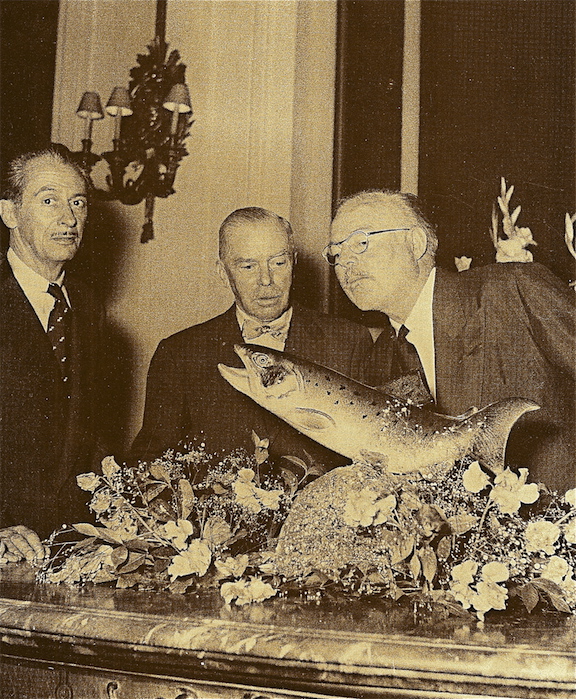 WINE AND FOOD
WINE AND FOOD
MATCHES REVISITED
By Geoff and Susan Kalish
Ernest Hemingway at The
Ritz, Paris
Like
many others during
these past seven months, we have been
eating primarily at home,
providing us the opportunity to match
more than one wine with our nightly
fare
and do a bit of experimenting with
wine and food matches. And what we’ve
found
is that while many red wines can mate
quite well with fish (especially
swordfish, salmon and tuna), and some
whites (like Grüner Veltliners,
viogniers
and especially full-bodied Champagne)
can make harmonious matches with beef
and
lamb, there are just some combinations
of wine and food that do not work. So,
from a series of nightly wine and food
tastings, the following are some of
the
lessons learned.
While most dry reds,
especially those made from the Cabernet
Sauvignon grape, make ideal
accompaniment
to beef and lamb, they mated
particularly poorly with any dishes
containing
more than a bit of sweetness, like baked
squash with apples, fresh corn and
even beets. And it didn’t matter if the
wine was a recent vintage or a
well-aged bottle. In fact, the older the
wine the worse the match.
Some of the wines (mainly
personal favorites) we tried were Jordan
and Flora Springs Cabernet Sauvignons
from California, Pavillon Rouge de
Château Margaux, Château Prieuré Lichine
and
Guigal Gigondas from France, Romeo de
Castello Etna Rosso Allegrecore, Volpaia
and Castlegreve Chianti Classicos from
Italy and Periquita Reserva from
Portugal. 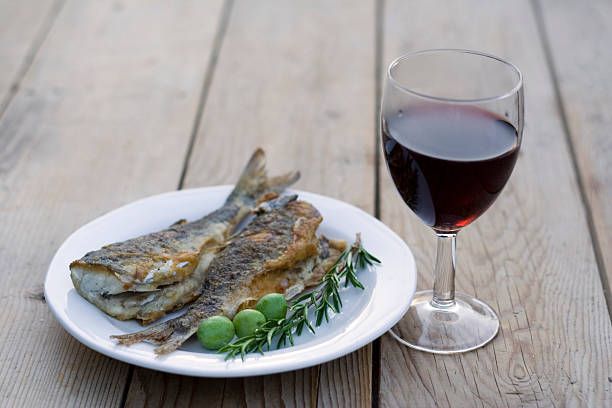
On the other hand, wines
made from the Pinot Noir grape,
especially those with low amounts of
harsh
tannin in their finish, mated quite well
with these same dishes as well as with
the beef and lamb. Some of the wines
sampled were Primarius and The Withers
English Hill Pinot Noirs from
California, Ponzi and La Crema Pinot
Noirs from
Oregon and Domaine Shanzy Santenay and
Frederick Esmonin Gevry-Chambertin
Burgundies from France. Other notable
exceptions were light Zinfandels like
Turley Juvenile and Valpolicella
Ripassos from Italy, such as those from
Zenato
and Farina that had a bouquet and taste
of plums and ripe cherries and again
low tannin in their finish.
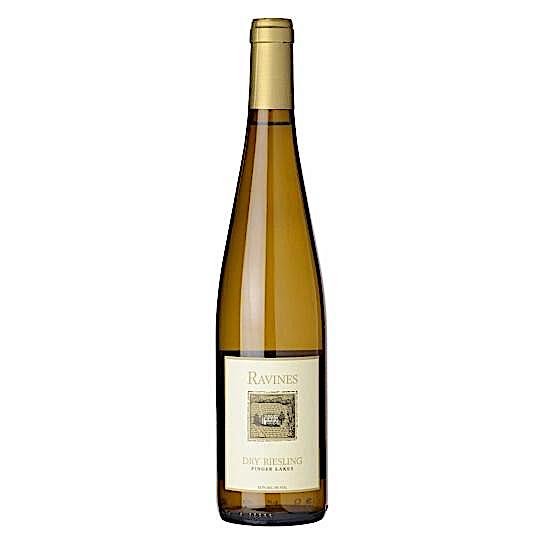 Moreover,
most dry whites
tried—ranging from Chardonnay-based
wines from France, Italy and California
to
dry Chenin Blancs to Sauvignon Blancs
from California and New Zealand, and
even
Gavis and Pinot Grigios from Italy—mated
poorly with the dishes with a modicum
of sweetness. The acidity in the wine
clashed with the sweetness of the fare.
Moreover,
most dry whites
tried—ranging from Chardonnay-based
wines from France, Italy and California
to
dry Chenin Blancs to Sauvignon Blancs
from California and New Zealand, and
even
Gavis and Pinot Grigios from Italy—mated
poorly with the dishes with a modicum
of sweetness. The acidity in the wine
clashed with the sweetness of the fare.
Whites that mated best
were Rieslings, even dry Rieslings from
Ravines and Forge in New York state and
Gewürztraminers from Alsace, like
Zind-Hunbrecht and Trimbach. Yet, these
same
wines were only barely acceptable with
mild fish like branzino and halibut,
with wines showing a citrusy finish like
many Chardonnay-based whites, crisp
Sauvignon Blancs and Assyritko from
Greece mating best. Also, Pinot
Noir-based
reds mated better than Cabernet
Sauvignon or Merlot-based wine with mild
seafare.
As to full-flavored fish,
like swordfish, tuna, and salmon, we
found that reds made equally harmonious
accompaniment as whites. In fact, these
denizens of the deep often overwhelmed
mildly flavored whites like most Pinot
Grigio.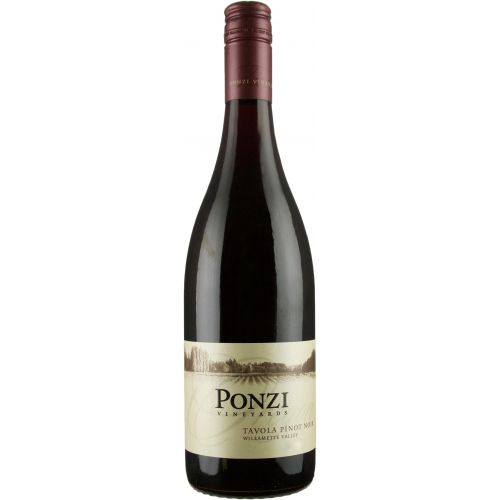
As for some specific
preferences, we found surprisingly that
shrimp (grilled, boiled plain, and
scampi) all mated well with almost all
wines sampled (reds and whites), as did
these same wines with chicken made in a
variety of ways. Equally surprisingly,
many of the same reds mated poorly with
scallops, which are better with whites
with vibrant acidity in their finish. On
the other hand, ribs and pork chops
mated far better with any of the reds
than the whites, with Gewürztraminer
and
Rieslings the only exceptions. In
fact, even sweet Chenin Blancs and
full-bodied Prémier Cru Chablis (such as
Fourchaume) seemed overwhelmed by the
fare.
So, our
bottom-line takeaways:
•
While many red wines go with
fish, not
all make the grade, with reds based
on
Cabernet Sauvignon or Merlot grapes
mating poorly with milder seafare. On
the
other hand, full-flavored seafare mated
equally well with reds as full-bodied
whites.
•
Not all meals with beef or lamb
as a
main course mated well with all reds.
Again, Cabernet Sauvignon- or
Merlot-based reds, especially those with
more than a touch of tannin in their
finish, made poor accompaniment to these
meals if a dish showing sweetness was
included.
•
Pork, chicken and surprisingly
shrimp
are the “universal recipients” of wine,
mating equally with all whites and dry
reds sampled.
•
The type of wine is
far more important than the particular
brand served.
 BLOCK
THOSE METAPHORS!
BLOCK
THOSE METAPHORS!
"Now, it should be mentioned that Emily’s paramour,
Gabriel (Lucas Bravo), is a chef. . . . He is
incredibly handsome. So handsome. Like if Armie Hammer
procreated with one of the sturdier barricades
in Les Mis —
Gabriel would be the gorgeous offspring. I mean, even
though I’m quite upset about this true excrescence
while contemplating his torso and face, I’m filled
with jouissance, with all its Barthesian overtones of
orgasmic joy. And I guess the contemplation of his
beauty has put me in a good mood too, because honestly
the acting throughout the series is really strong and
Paris’s beauty does emerge from the shitshow unscathed
and even if the boulangerie are nothing but blank
parodies of themselves and the scenes within them are
riddled with continuity errors, to see such vast array
of batards, baguettes, pains au chocolat, croissants,
and brioche is enormously pleasurable. But anyway, as
angelic as he is, Gabriel can’t save this carnival of
fart smell."—Joshua David Stein, "The Lack of
Flavor in ‘Emily in Paris’ Is Only Emphasized by Its
Meals," Eater.com (Oct. 11, 2020)

"The Gin Rickey is similar to the G&T in that it has gin and lime and a mixer. But instead of tonic, you use club soda, and instead of some gracefully adorned lime wedges, you throw in whole, hulking lime half. For your willingness to swap soda for tonic, you get a drink that's as refreshing as a dash through an oscillating sprinkler fanning cold water over green grass on a 100-degrees-at-least day."—Sarah Rense, Esquire.com.
❖❖❖
Sponsored by

Any of John Mariani's books below may be ordered from amazon.com.
 The Hound in Heaven
(21st Century Lion Books) is a novella, and
for anyone who loves dogs, Christmas, romance,
inspiration, even the supernatural, I hope you'll find
this to be a treasured favorite. The story
concerns how, after a New England teacher, his wife and
their two daughters adopt a stray puppy found in their
barn in northern Maine, their lives seem full of promise.
But when tragedy strikes, their wonderful dog Lazarus and
the spirit of Christmas are the only things that may bring
his master back from the edge of despair.
The Hound in Heaven
(21st Century Lion Books) is a novella, and
for anyone who loves dogs, Christmas, romance,
inspiration, even the supernatural, I hope you'll find
this to be a treasured favorite. The story
concerns how, after a New England teacher, his wife and
their two daughters adopt a stray puppy found in their
barn in northern Maine, their lives seem full of promise.
But when tragedy strikes, their wonderful dog Lazarus and
the spirit of Christmas are the only things that may bring
his master back from the edge of despair. WATCH THE VIDEO!
“What a huge surprise turn this story took! I was completely stunned! I truly enjoyed this book and its message.” – Actress Ali MacGraw
“He had me at Page One. The amount of heart, human insight, soul searching, and deft literary strength that John Mariani pours into this airtight novella is vertigo-inducing. Perhaps ‘wow’ would be the best comment.” – James Dalessandro, author of Bohemian Heart and 1906.
“John Mariani’s Hound in Heaven starts with a well-painted portrayal of an American family, along with the requisite dog. A surprise event flips the action of the novel and captures us for a voyage leading to a hopeful and heart-warming message. A page turning, one sitting read, it’s the perfect antidote for the winter and promotion of holiday celebration.” – Ann Pearlman, author of The Christmas Cookie Club and A Gift for my Sister.
“John Mariani’s concise, achingly beautiful novella pulls a literary rabbit out of a hat – a mash-up of the cosmic and the intimate, the tragic and the heart-warming – a Christmas tale for all ages, and all faiths. Read it to your children, read it to yourself… but read it. Early and often. Highly recommended.” – Jay Bonansinga, New York Times bestselling author of Pinkerton’s War, The Sinking of The Eastland, and The Walking Dead: The Road To Woodbury.
“Amazing things happen when you open your heart to an animal. The Hound in Heaven delivers a powerful story of healing that is forged in the spiritual relationship between a man and his best friend. The book brings a message of hope that can enrich our images of family, love, and loss.” – Dr. Barbara Royal, author of The Royal Treatment.
 |
The Encyclopedia of American Food and Drink by John F. Mariani (Bloomsbury USA, $35) Modesty forbids me to praise my own new book, but let me proudly say that it is an extensive revision of the 4th edition that appeared more than a decade ago, before locavores, molecular cuisine, modernist cuisine, the Food Network and so much more, now included. Word origins have been completely updated, as have per capita consumption and production stats. Most important, for the first time since publication in the 1980s, the book includes more than 100 biographies of Americans who have changed the way we cook, eat and drink -- from Fannie Farmer and Julia Child to Robert Mondavi and Thomas Keller. "This book is amazing! It has entries for everything from `abalone' to `zwieback,' plus more than 500 recipes for classic American dishes and drinks."--Devra First, The Boston Globe. "Much needed in any kitchen library."--Bon Appetit. |
"Eating Italian will never be the same after reading John Mariani's entertaining and savory gastronomical history of the cuisine of Italy and how it won over appetites worldwide. . . . This book is such a tasteful narrative that it will literally make you hungry for Italian food and arouse your appetite for gastronomical history."--Don Oldenburg, USA Today. "Italian
restaurants--some good, some glitzy--far
outnumber their French rivals. Many of
these establishments are zestfully described
in How Italian Food Conquered the World, an
entertaining and fact-filled chronicle by
food-and-wine correspondent John F.
Mariani."--Aram Bakshian Jr., Wall Street
Journal.
"Equal parts
history, sociology, gastronomy, and just
plain fun, How Italian Food Conquered the
World tells the captivating and delicious
story of the (let's face it) everybody's
favorite cuisine with clarity, verve and
more than one surprise."--Colman Andrews,
editorial director of The Daily
Meal.com. "A fantastic and fascinating
read, covering everything from the influence
of Venice's spice trade to the impact of
Italian immigrants in America and the
evolution of alta cucina. This book will
serve as a terrific resource to anyone
interested in the real story of Italian
food."--Mary Ann Esposito, host of PBS-TV's
Ciao
Italia. "John Mariani has written the
definitive history of how Italians won their
way into our hearts, minds, and
stomachs. It's a story of pleasure over
pomp and taste over technique."--Danny Meyer,
owner of NYC restaurants Union Square
Cafe, The Modern, and Maialino.
|
 |
 |
 |
 |
 |
 |
 |
 |
 Everett Potter's Travel Report:
Everett Potter's Travel Report: 
 Eating Las Vegas
JOHN CURTAS has been covering the Las Vegas
food and restaurant scene since 1995. He is
the co-author of EATING LAS VEGAS – The 50
Essential Restaurants (as well as
the author of the Eating Las Vegas web site: www.eatinglasvegas.
He can also be seen every Friday morning as
the “resident foodie” for Wake Up With the
Wagners on KSNV TV (NBC) Channel 3 in
Las Vegas.
Eating Las Vegas
JOHN CURTAS has been covering the Las Vegas
food and restaurant scene since 1995. He is
the co-author of EATING LAS VEGAS – The 50
Essential Restaurants (as well as
the author of the Eating Las Vegas web site: www.eatinglasvegas.
He can also be seen every Friday morning as
the “resident foodie” for Wake Up With the
Wagners on KSNV TV (NBC) Channel 3 in
Las Vegas.
MARIANI'S VIRTUAL GOURMET
NEWSLETTER is published weekly. Publisher: John Mariani. Editor: Walter Bagley. Contributing Writers: Christopher Mariani,
Robert Mariani, Misha Mariani, John A. Curtas, Gerry Dawes, Geoff Kalish,
and Brian Freedman. Contributing
Photographer: Galina Dargery. Technical
Advisor: Gerry
McLoughlin.
If you wish to subscribe to this
newsletter, please click here: http://www.johnmariani.com/subscribe/index.html
© copyright John Mariani 2020
